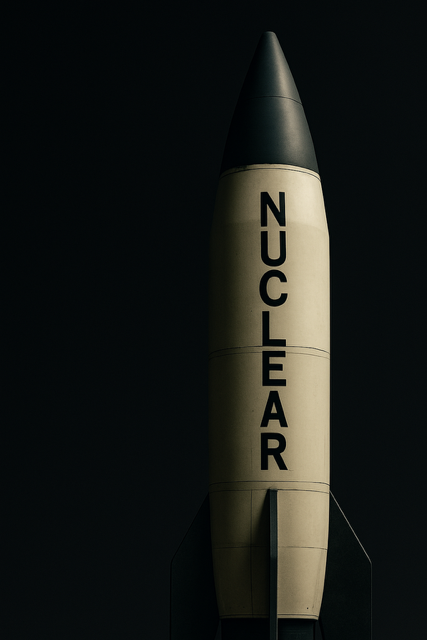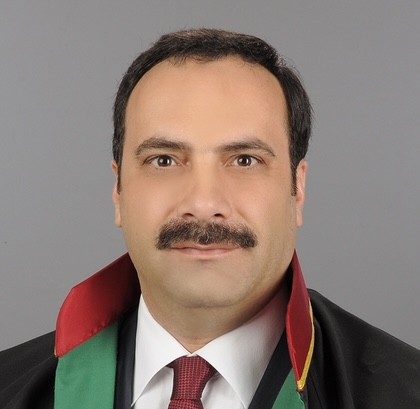
The Future of the Nuclear Non-Proliferation Treaty: Crisis, Credibility, and the Case for Reform
The global nuclear order is under unprecedented strain. From Russia’s nuclear posturing during the war in Ukraine to escalating hostilities between India and Pakistan and unresolved tensions on the Korean Peninsula, the credibility of the Nuclear Non-Proliferation Treaty (NPT) is increasingly under question. Established in 1968 with three foundational aims—preventing the spread of nuclear weapons, advancing disarmament, and promoting peaceful nuclear energy—the treaty now appears ill-equipped for the geopolitical and technological realities of the 21st century.
Though the NPT has achieved notable successes, such as curbing proliferation and supporting IAEA-monitored programs, its moral and political authority has weakened. This erosion stems from the unchecked modernisation of nuclear arsenals by major powers, lack of engagement with nuclear-armed non-signatories, and growing frustration among Global South nations that view the treaty as a mechanism of control rather than cooperation. Without meaningful reform, the NPT risks becoming irrelevant—not by outright defiance, but by slow and structural obsolescence.
Realist theory provides a clear lens through which to view the NPT’s shortcomings. In an anarchic international system where state survival is paramount, nuclear deterrence remains a rational strategic choice. Modernisation efforts by the United States, Russia, and increasingly China reflect these security-driven imperatives. Treaties, in this view, are only as strong as the power interests behind them.
Neoliberal institutionalists offer a contrasting outlook. They argue that international institutions can foster cooperation—even among rivals—by reducing uncertainty and promoting transparency. However, the NPT’s asymmetrical enforcement undermines this potential. While countries like Iran and North Korea face severe penalties, nuclear-armed states often avoid meaningful scrutiny. This double standard has weakened the treaty’s legitimacy and eroded trust.
Constructivist perspectives add further depth, highlighting how global norms and identities shape nuclear behaviour. Once widely accepted, the norm of non-proliferation is now fraying. Israel’s undeclared arsenal, North Korea’s open defiance, and India and Pakistan’s growing capabilities challenge the NPT’s normative authority. Meanwhile, the Global South increasingly sees the treaty as reflecting outdated Cold War dynamics that no longer serve their security or development needs.
Together, these theoretical perspectives illustrate that the NPT’s fragility is not just structural—but conceptual. It reflects a failure to adapt its rules, norms, and institutions to an evolving international order.
Regional Instability and Power Imbalances
The nuclear landscape of South and East Asia presents some of the most acute threats to global security today. Nowhere is the gap in the NPT’s architecture more glaring than in South Asia, where two nuclear-armed nations—India and Pakistan—remain outside the treaty’s framework. The NPT’s inability to engage these actors has left a critical vacuum in global arms control.
India and Pakistan have fought multiple wars and skirmishes since independence, most notably the 2019 Pulwama–Balakot crisis, which brought them to the brink of open conflict. Pakistan’s deployment of tactical nuclear weapons and India’s evolving doctrine of “Cold Start” rapid mobilisation raise the risk of nuclear exchange through miscalculation. External alliances further entangle this volatility: India’s increasing cooperation with the United States, and Pakistan’s strategic partnership with China, introduce great power dynamics that can quickly escalate a bilateral conflict into a multilateral crisis.
The failure to address South Asia within the NPT structure also deepens scepticism among Global South countries. Many states—such as Brazil, South Africa, and Indonesia—observe a system that tolerates nuclear privilege among allies and sanctions others based on strategic convenience. This undermines the universality and fairness that are essential for any global governance regime.
East Asia presents a similarly precarious picture. North Korea’s withdrawal from the NPT and subsequent nuclear development have defied sanctions and diplomatic pressure. Pyongyang frames its arsenal as essential for regime survival in the face of existential threats. Meanwhile, debates in South Korea about developing an independent deterrent or hosting U.S. tactical weapons underscore a growing regional arms anxiety. Taiwan, though not a nuclear actor, sits at the centre of U.S.–China strategic rivalry, where any military incident could trigger a broader escalation.
China’s role is particularly complex. While it officially upholds a policy of minimum deterrence, its nuclear arsenal is expanding, and its development of dual-use space and missile technologies raises concerns about strategic ambiguity. For China to be a credible voice for non-proliferation, it must balance its growing global influence with transparency and restraint. Constructive engagement—particularly through trilateral mechanisms with Japan and South Korea—offers a potential pathway to stability. These economic and diplomatic dialogues must now evolve into platforms for arms control, crisis communication, and regional security guarantees.
Across both regions, the NPT’s failure to account for shifting alliances, new technologies, and excluded powers leaves the global order exposed to nuclear flashpoints. A modern arms race in Asia would not remain confined—it would reshape global norms, erode trust in treaties, and fuel a broader unravelling of the non-proliferation regime.
Pathways to Reform
To restore its relevance and legitimacy, the Nuclear Non-Proliferation Treaty must be reformed in both structure and spirit. The geopolitical landscape has evolved dramatically since 1968, and so must the treaty’s mechanisms for enforcement, inclusion, and innovation. A modernised NPT must be rooted in six key principles:
First, nuclear-armed states must commit to transparent, measurable steps toward disarmament. Declarations of strategic doctrine, timelines for arsenal reductions, and third-party inspections—especially through the IAEA and neutral international panels—can restore lost credibility. The symbolic language of disarmament must give way to demonstrable action.
Second, the International Atomic Energy Agency must be empowered with greater autonomy, resources, and access. This includes authority to inspect not only civilian nuclear programs, but also dual-use technologies, cyber vulnerabilities, and emerging threats tied to nuclear command and control. Countries must not be allowed to cherry-pick compliance.
Third, while full NPT accession may be politically unfeasible for countries like India, Pakistan, Israel, and North Korea, the creation of parallel risk-reduction protocols—such as moratoriums on fissile material production, voluntary transparency initiatives, and regional non-use agreements—can provide off-ramps from escalation and bring these actors into a broader cooperative framework without legitimising their arsenals.
Fourth, the treaty must be updated to account for the convergence of nuclear capabilities with space, cyber, and artificial intelligence. The weaponisation of satellite systems, the risk of autonomous targeting decisions, and the vulnerability of nuclear command networks to cyber intrusion demand urgent regulation. Any modern arms control regime must reflect the full spectrum of 21st-century warfare.
Fifth, the governance structures surrounding the NPT—particularly the Nuclear Suppliers Group and the review conferences—must include fair representation from Global South nations. A rotating international nuclear council, composed of both nuclear and non-nuclear states, would enhance the legitimacy of decision-making and reduce perceptions of hegemony. Regional voices must help shape global nuclear norms.
Finally, the normative foundation of the treaty must be restored by aligning it with broader human security goals. Linking disarmament to sustainable development, climate resilience, and public health can reinvigorate global moral investment. The humanitarian consequences of nuclear war are not theoretical—they are existential and addressing them requires a shared moral horizon.
Together, these reforms offer more than mere technical fixes—they signal a renewed vision of global security based on equity, accountability, and cooperation. Without such transformation, the NPT risks losing not only its relevance but its very reason for existence.
Conclusion: Between Survival and Ruin
The Nuclear Non-Proliferation Treaty remains one of the most significant international accords ever signed. Yet its continued relevance is no longer guaranteed. If left unreformed, the treaty risks a slow descent into obsolescence—undermined not by open revolt, but by erosion of trust, growing geopolitical fragmentation, and strategic irrelevance.
Historical episodes such as the 1983 Able Archer incident, when NATO exercises nearly triggered a Soviet nuclear response, and the 2019 India–Pakistan Pulwama–Balakot crisis, underscore how close the world has come to nuclear catastrophe—not from deliberate aggression, but from miscommunication and fear. In a world marked by automated weapons systems, fragile regional alliances, and contested information flows, the margin for error continues to shrink.
Without urgent structural reform, a new arms race may already be underway—not just in warhead numbers, but in sophistication, delivery systems, and digital command chains. Such a trajectory would undo decades of disarmament progress and normalize nuclear risk as a feature of international politics.
Yet the future of the NPT is not foreclosed. The road to renewal lies in collective action and shared responsibility. Traditional powers must lead by example, but emerging powers must also be given voice and agency. Multilateral diplomacy—especially in Asia, where nuclear fault lines intersect most dangerously—must be scaled up and insulated from ideological rigidities.
China, the United States, and the European Union all have a role to play. So too do regional powers like South Africa, Brazil, and Indonesia—nations whose commitment to disarmament and development represent a different kind of leadership. Civil society, scientific communities, and youth movements must be invited into the conversation. The moral case for abolition is not a relic of the Cold War; it is a survival imperative for the 21st century.
The choice before us is stark: adapt the treaty to reflect a multipolar, interconnected world—or risk inheriting a future where nuclear disaster becomes not just possible, but probable. Between survival and ruin, the NPT must find the courage to evolve.
References
• Arms Control Association. “Nuclear Weapons: Who Has What at a Glance.” 2024.
• Kristensen, H., & Korda, M. “World Nuclear Forces.” Bulletin of the Atomic Scientists, 2024.
• Klotz, Frank. The Military Case for Extending New START. RAND Corporation, 2023.
• Sagan, Scott. “Why Do States Build Nuclear Weapons?” International Security, vol. 21, no. 3 (1996): 54–86.
• Gibbons, Rebecca. “The Humanitarian Turn in Nuclear Disarmament.” The Nonproliferation Review, 2018.
• Todi, Sarthak. “Reforming the Nuclear Nonproliferation Treaty.” The Diplomat, 2024.
• SIPRI. Global Nuclear Developments: Regional Tensions and Disarmament Trends. Stockholm: SIPRI Yearbook, 2024.
• United Nations Office for Disarmament Affairs. Treaty on the Non-Proliferation of Nuclear Weapons (NPT). UNODA, 2024.
• Panda, Ankit. Kim Jong Un and the Bomb: Survival and Deterrence in North Korea. Oxford University Press, 2020.

